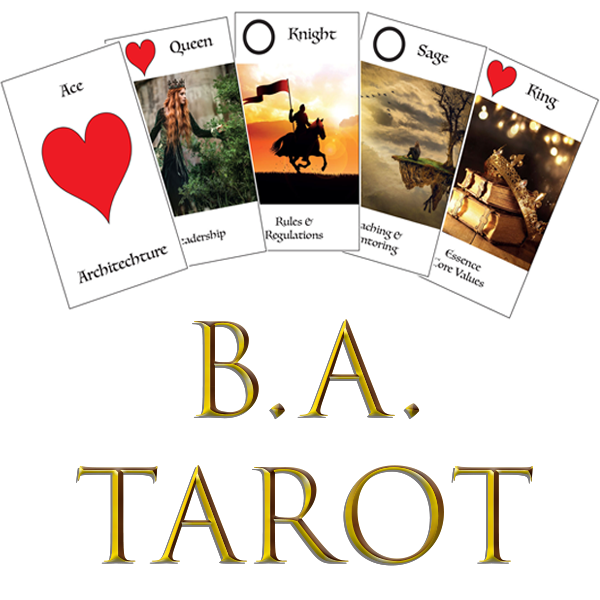
Triangles: Resources

Resources are what an organisation uses to achieve its goals and to trade. An organisation leverages these resources to its best advantage.
These resources are usually divided into
- Human resources,
- Financial resources,
- Physical resources,
- Information resources
For the purposes of the cards I have divided the main resources into
- Tangible Resources: Equipment, Staff , cash, assets, products.
- Intangible Resources: Services, goodwill, image, reputation, brand, etc.
However there are some other considerations with regards resources that also need to be considered especially the most valuable resource that an organisation has which is the customer.
How the organisation looks after and maintains its resources for the business benefit is a key element. Businesses are aware of equipment maintenance but other resources such as Human, Product and Information also need a maintenance program.
(This is called protection in military terms)
This card is still Resources in the V3.0 version
On the reverse of the card are:
- Financial and sources of finance
- People
- Skills
- Equipment/tools
- Systems
- Partners and Suppliers
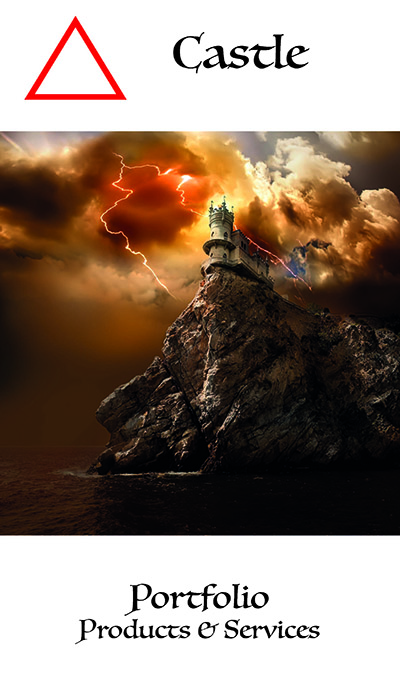
The Castle: Portfolio of products and services
The castle represents the business portfolio and how the organisation maintains its range of products and services. There are several tools that can be used to asses the portfolio of products and services – Here are a few. The key element of this card is to have active routine reviews of the products and services that are offered considering if they can be improved, developed or removed.
- Resource Audit:
- Boston Consulting portfolio matrix
- Value Chain Analysis:
- Core Competence Analysis:
- Performance Analysis
The Original Portfolio has been replaced with Needs in the V3.0 versions. Businesses and projects have a wide variety of needs and when considering resources (the suit) the needs of the organisation (or the team) are an important consideration.
On the reverse of the card are:
- Physical
- Growth and Development
- Relationships (partners, teams, trust)
- Recognition
- Community spirit (the greater good)
- Constraints (what is not available)
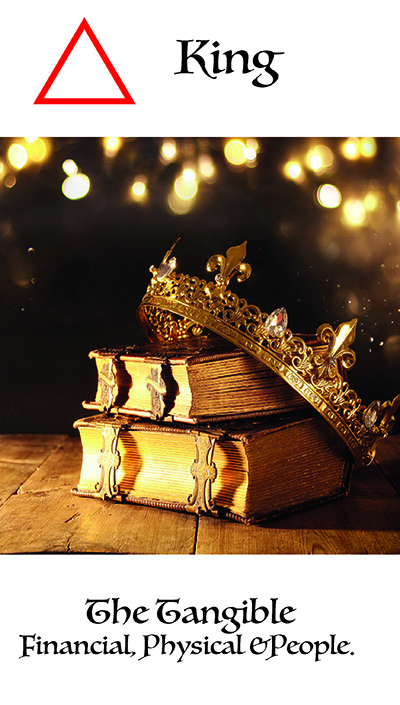
The King: Tangible Resources
Tangible Resources are king when it comes to business, financial security, physical assets and good people form the backbone of any organisation. The intangible are all very well when things are going well but the tangible resources form the foundation of the business that will enable resources to develop the intangible. Without a well run financial business, goodwill and brand is meaningless.
Maintenance or protection of all these resources are incredibly important.
This card is still The Tangible in the V3.0 versions
On the reverse of the card are:
- People
- Tools and associated software
- Machinery
- Finance
- Raw materials (supply)
- Inventory or stock
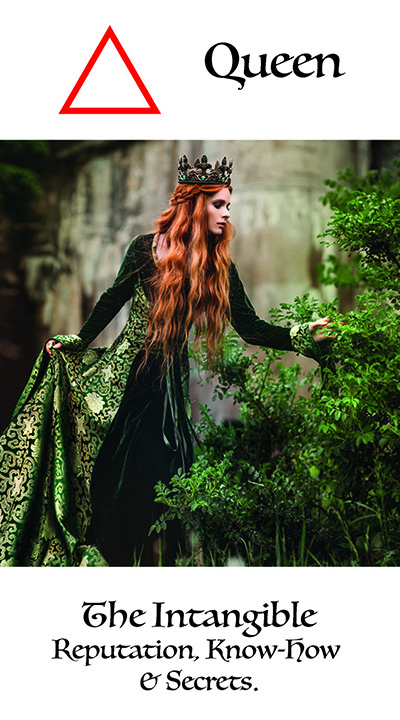
The Queen: The intangible resources
The intangible resources (Image, reputation and secrets), Once you have established your foundations understanding your intangible resources can be a little more complex. (Because they are intangible).
- Organisational Identity is the way an organisation wishes to be seen. The organisation develops “values” to represent these wishes. Values are usually words and with images that reinforce the desired appearance.
- Organisational Image is the way an organisation’s stakeholders interpret its values and identity. Stakeholders will look at an organisation’s identity and, depending on how well it is communicated, will interpret it appropriately or not. Organisational Image can be positive or negative.
- Organisational Performance Is the point where stakeholders interact with the organisation, their experience the organisation’s quality of products or service, its behaviors and its applied values. Each touch point, of the organisation needs to ensure that brand values are indeed fulfilled.
- Organisational Reputation is the collective attitude of all stakeholders creates organisational reputation. Given that it is rooted in the substance of an organisation, the reputation is relatively more stable than the image but is therefore more difficult to change.
Secrets: This is the know how within intangible assets. They do not have to be patents, trademarks or copyrights they can be as simple as finding a unique way or efficient way of doing a function. Keeping your secrets safe and preventing other from knowing your “secret sauce”. Research and Development does not have to be in a laboratory separate from Business as Usual. R& D can be in every department within the organisation allowing individuals time and space to experiment is:
- Tax deductible through R&D tax credits
- A fantastic way of developing new products and processes for the business.
This card is still The Intangible (secrets) in the V3.0 versions
On the reverse of the card are:
- Know how
- Trademarks and copyright
- Goodwill
- Reputation and Brand
- Data and the relationship between data
- Contracts
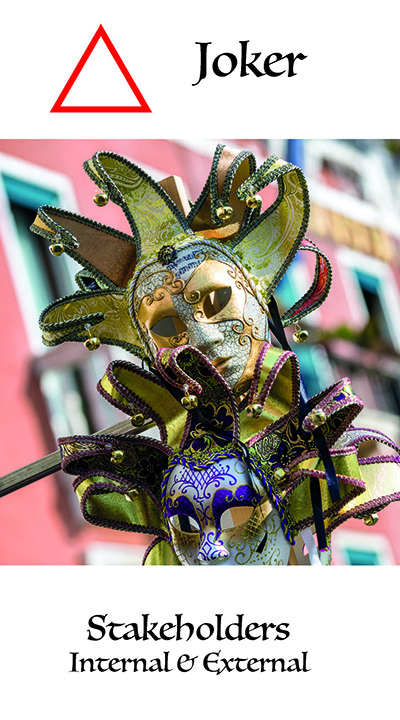
The Joker: Stakeholders
Most businesses consider their internal stakeholders as a resource but external stakeholders such as suppliers, investors, shareholders, competitors, customers and even family of employees are all resources that the organisation can call upon to help the business.
By considering the stakeholders of the business as a resource that can be utilised for the benefit of the business.
Examples:
- Regular customer reviews – How is it going? How can we help you to be more competitive?
- Regular supplier reviews – How can you help me to be more competitive?
- Regular competitor meetings – How can we help each other yet stay competitive?
- Use of family to spread social messaging for an organisation.
Stakeholder review process can increase the amount of resources that an organisation can leverage.
This card is still Stakeholders in the V3.0 versions
On the reverse of the card are:
- Internal
- External
- Champions
- Critics
- Authorities (and influencers)
- Project specific stakeholders

The Knight: Needs and Protection
It is no coincidence that this suit represents Mazlow’s Hierarchy of needs diagram, your staff have needs, your departments have needs and your organisation has needs. (and constraints – the non fulfilment of needs). I am a big believer of understanding individual needs, whether it is a new tool to do the job more efficiently or it is time off to deal with a personal or family matter. There is no point in trying to get an individual to focus on the business goals if they have an un satisfied underlying need (like no house to live in)
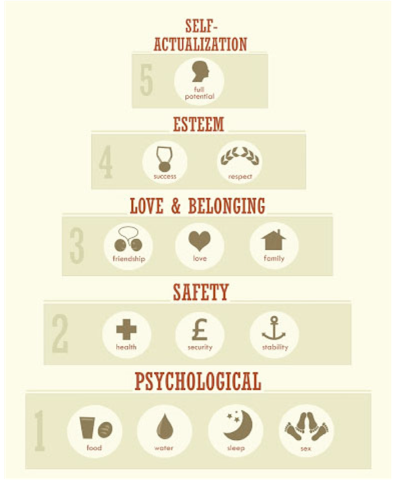
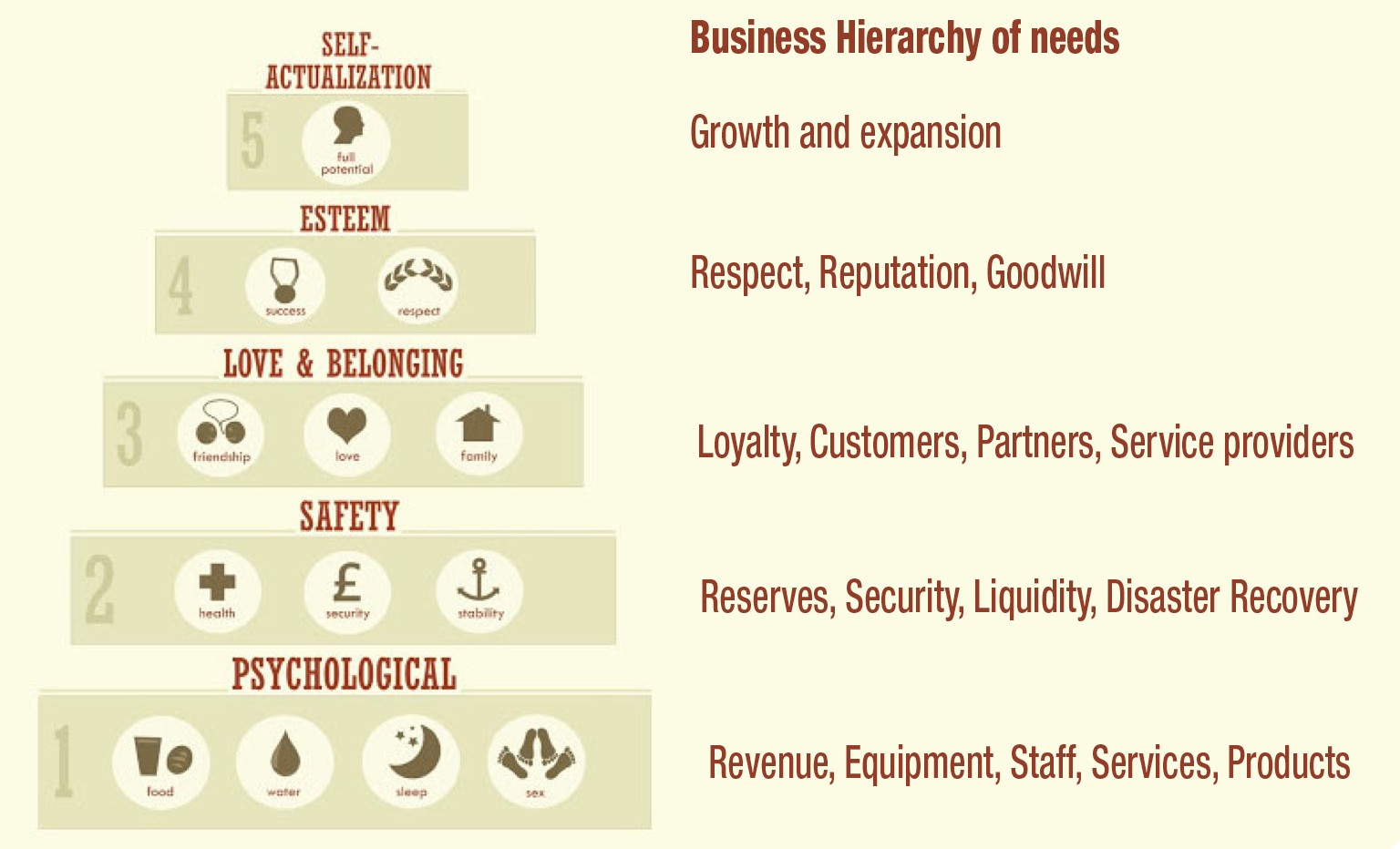
I am sure that most of you are familiar with the Maslow Hierarchy however have you ever considered it for an organisation or department. Protection of resources and fulfilling personal and organisational needs is what this card represents.
This card is Protection in the Mad about CRM version and V3.0 versions
The Original Needs has been replaced with Protection in the V3.0 versions – Needs is now the castle of this suit (I split them out) . This card represents the protection of the resources within the organisation.
On the reverse of the card are:
- Individual protection
- Company protection
- Project protection
- Repair and maintenance of resources
- Risks
- Disaster recovery

The Sage: Customer & Value
Ultimately the biggest asset that the business has is the customer and the value that the business gives to them them. I recognise that this is represented in the Holy Trinity cards but when considering resources and leveraging these resources I felt that it was equally important to include the customer (and prospects) perspective as a stakeholder in the business.
Without this resource the organisation would not exist and so putting effort into understanding what the customers needs are, the value that the organisation delivers to them and how the organisation can increase the value to them by improving their business. Embedding touch points within the customer organisation from CEO to accounts clerk, the more connections the more you add value to the organisation.
I once read a paper on “Customers as Resource Integrators” which described the model of co-creation.
“The traditional wisdom is that value is created by a “producer” and purchased by a customer for “consumption.” Indeed, the consumer behaviour literature has focused more on the consumer’s buying decision than on what the customer does (Xie, Bagozzi and Troye 2008). More recently, this producer-consumer model has begun to be replaced by a model of co-creation of value, a model in which value is created through the joint activities of providers and customers but also the activities of others in the networks of these parties.”
Which is why I have duplicated the customer card in this suit.
The Original Customer and Value has been replaced with Products Delivered in the V3.0 versions. This enables the card to be better used when considering a project, and I believe that value to the customer is usually delivered through the products and services delivered.
On the reverse of the card are:
- Customer or user
- Organisation
- Value
- Time and budget
- Documentation
- Lessons learned
On the reverse of the original cards:
On the reverse: of the Circles cards are the key elements of value proposition:
Functionality
Price
Quality
Choice
Availability
Image and Reputation
I find this useful in workshops/ interviews as a reminder and to ensure that the subject has considered all aspects of value.
